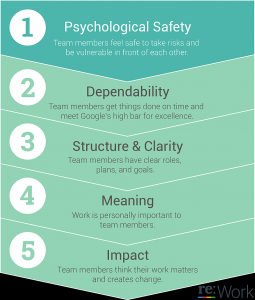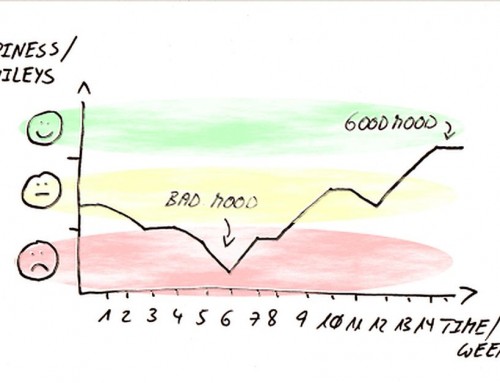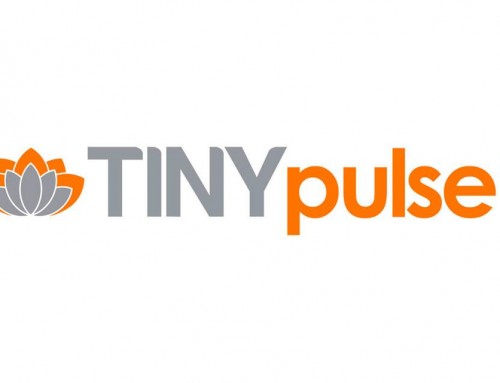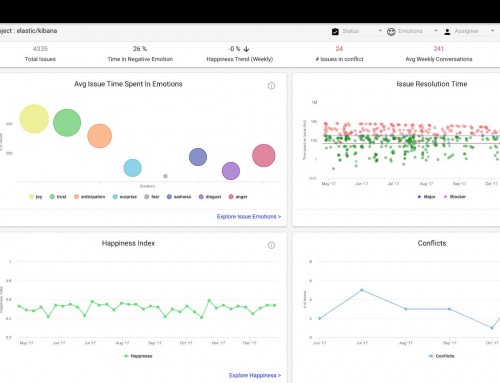Happy People are Productive People — Productivity, Team Happiness, and Team Morale
Happy People
"Happier workers are about 12% more productive."
Prof. Andrew Oswald, Journal of Labor Economics, 2014
In the barren Himalaya region, the small Kingdom of Bhutan was the first country having a Ministry of Happiness. In the 1970s, the fourth king of Bhutan, Jigme Singye Wangchuck coined the notion of Gross National Happiness (GNH), with his famous saying "We do not believe in Gross National Product. Gross National Happiness is more important."
Since 2012 the UN Sustainable Development Solutions Network (SDSN) publishes the yearly World Happiness Index (WHI) which ranks 155 countries by their happiness levels. Happiness is considered to be the proper measure of social progress and the goal of public policy. In 2017, Norway became the happiest country.
In the modern business world and new leadership resp. management concepts employer and team happiness became a huge topic. Many companies thrive for happy and well-being employees with the expectation that happier people are more productive.
“The primary focus of any manager should be to energize people,”
Jurgen Appelo, Management 3.0: Leading Agile Developers, Developing Agile Leaders,
Addison-Wesley, 2011.
The corollary mantra is "Happy people are productive people." In 2014, researchers at the University of Warwick published a study, that happiness led to a 12% spike in productivity, while unhappy workers proved 10% less productive.
This statement became accepted. Today, in 2017 you find it in all over the Internet, e.g. in the productivity centered IDoneThis blog.

In 2016, Google published a study performed in his Aristotle project. Google investigated several years which characteristics make a high performing team. The researchers looked at 180 teams from all over the company. Google identified 5 keys to team success.
These success factors are strongly related to the work of Daniel Pink about what motivates us as humans. As Dan Pink points out in his RSA talk and book Drive, people are motivated by autonomy, purpose, and mastery.
And, Takeuchi and Nonaka observed in their seminal paper about Scrum that great teams exhibit autonomy, transcendence, and cross-fertilization.
According to Google the 5 keys to team success are
- Psychological Safety — Can the team can take risks without feeling insecure or embarrassed?
- Dependability — Can team members count on each other to do high-quality work on time?
- Structure and Clarity — Are goals, roles, and execution plans on the team clear?
- Meaning of Work — Does each team members know that her work matters?
- Impact of Work — How does the work that people are doing actually benefit the company?
Now, let's get back to happy people, employees, and teams.
Team Happiness
Team happiness, mindfulness, and mental sustainability are today vital topics in many firms, especial in contemporary software management and product development companies. Firms from Google, Etzy to Bank of America are investing in ways to measure their employee's happiness — and how to make them happier.
At Google, the engineer Chade-Meng Tan created in 2007 the training „Search Inside Yourself“ (SIY). SIY comprises exercises for mindfulness, meditation, and mental health. This was so successful that he wrote a book and founded the Search Inside Yourself Leadership Institute.
Jurgen Appelo founded in Europe, around 2010, 2011 the global professional Happiness Association Happy Melly dedicated to helping people be happier at work.
To facilitate, measure and visualize happiness on the project and team level several tools were developed:
- Happiness Index — Reading Time: 3 minutes Employes, team members, rate frequently their (daily) happiness on a numeric scale (1–5). This rating is tracked on team or department level to visualize a team’s mood over time and to help teams and management to improve their happiness (Jeff Sutherland, ScrumInc; Hendriek Kniberg, Crisp).
- Niko-Niko Calendar — Reading Time: < 1 minute A Niko-Niko calendar is a visual, iconic tool to track the mood of a team. You set up a calendar, and each team member tracks her mood after each working day with a smiley.
- Happiness Door — Reading Time: 2 minutes The Happiness Door is one of the Management 3.0 practices. It is a tool to give feedback continuously in workshops, events, or meetings in three categories: things that make attendees happy, things they feel neutral about and things they didn’t like. Usually, it is either an empty flipchart or a collection of post-its.
There are commercial tools to analyze people and happiness. If you are interested, have a look at my Happiness Index blog post.
Relationship of Happiness & Productivity
Although the Happiness Index is an easy to use metric for team atmosphere or the employee's mood, its usage shouldn't be overemphasized. There are some arguments (Christiaan Verwijs 2014, Sabrina Son 2016) why the happiness index can't be the Holy Grail of team success. I briefly summarize — for the details have a look at my blog post on Happiness Index:
- As an emotion, happiness is too subjective and has too many facets. People experience emotions differently.
- The Happiness index is neither task nor team-oriented. In its smiley variants, you get no information why people are happy or unhappy. And, asking a team for its happiness does not give any meaningful insights into the team's well-being.
Two interesting questions arise:
- "What is productivity?"
- "Does happiness make people more productive?" or vice versa, "Does being happy causes people to be more productive?"
For 1) there is a simple answer.
"Productivity [...] is expressed as the ratio of output to inputs used in a production process, i.e. output per unit of input. "
For 2), the aforementioned study at Warwick Univ. gives the following answers.
- Human happiness has large and positive causal effects on productivity. Positive emotions appear to invigorate human beings.
- A boost to happiness promotes a boost in productivity and unhappiness is associated with lower productivity.
Andrew Oswald, Eugenio Proto, and Daniel Sgroi
However, the researchers do not want to suggest real-world employers, to expend more resources on making their employees happier.
In addition, the results of Google's Aristotle Project show: Working in a psychologically safe environment makes teams great.
Although there is a hidden spring. Happy people become not necessarily, automatically, more productive and do great improvements. For this point, I go with Jurgen Appelo, Happiness does not mean improvement. — To make people happy, you have to improve their working conditions first. Creating an awesome workplace makes people happy and productive, definitively — the other way round works not necessarily.
Creating Psychologically Safe Environments To Work
Who creates "productive" environments and who is responsible that they sustain? — In the first place, (upper) management is responsible; in the second place each individual team member.
Let me explain.
The design of an organisation is one of the central duties of management — may be the most important one. And I use the notion "design" in a very broad sense:
- Physical Architecture — Workplaces have to be designed for supporting creativity and inspiration, for balancing collaboration and privateness, sustaining health (mental health, physical health: loudness, allergic reactions, etc.)
- Governance and Bureaucracy — Each company has to have to establish a certain level of governance: standards, working policies and guidelines prescribing how employees should work.
The challenge is to create governance as less as possible, to give the individual most autonomy within fewer prescriptions as possible. Paraphrasing Albert Einstein, everything should be made less prescriptive as possible, but not fewer. - Inter-personal Relationships — Creating a culture of trust and respect, open-minds, allowance of failures within the whole organisation are very important.
- The "Truth North" — Having a guiding star by establishing and living corporate values, vision, and mission is crucial for all employees and managers. The True North shows each day for everyone the personal WHY? — "Why is my work important?", "What footprint does the company have I work for?"
If you take into account all of these aspects, you will create a workplace where it is fun to work, where people are proud of, where people are happy.
However, there is a great caveat. It is a very, very, very, really very hard work to keep this inspiring workplace alive. It is a daily exercise for everyone to give others the psychological safety they need, show respect and trust. This is the objective for everyone: manager and leaders, employees, teams and team member.
Team Morale Is An Actionable Team Happiness Metric
The Happiness index is a valuable tool to gather trends of the emotional state of a team fast. But it is not suitable to dig below the surface.
How can we measure emotional team conditions better? From the military, you know the esprit de corps. Basically, it means cohesion: the cohesion of a unit, task force, or other military groups. Special operations forces have "high morale" due to both their training and pride in their unit. When a unit's morale is said to be "depleted", it means it is close to "crack and surrender".
Similarly, there is in the business world the notion of "team cohesion". Team or group cohesiveness arises when bonds link members of a social group to one another and to the group as a whole.
Team "morale is the capacity of a group of people to pull together persistently and consistently in pursuit of a common purpose.”
Wikipedia, sociologist Alexander Leighton.
Good morale means employee and teams are productive, collaborate better, and feel more satisfied with their work. If people feel good about their team, they’ll work seamlessly towards a common goal.
Christiaan Verwijs identified some indicators for high team cohesion resp. high team morale.
Teams with High Morale usually have the following traits:
- Mutual Support. — Members are willing to help each.
- Pride. — Members are proud of their team.
- Commitment, Dedication. — Members will go the extra mile individually or for the team.
- Endurance. — Members will persist (not give up), even in the face of high work-pressure, difficult problems.
- Happiness. — Members are generally happy to be on the team and to work with the other team members.
By tracking the frequency of existence or absence of these indicators you get numeric, actionable metrics. They still measure fairly intangible concepts, like pride, commitment, endurance. But they are more specific than simply happiness — ok, this till measured by the Happiness index.
For example, ask the team frequently following questions and chart the numbers.
- "How often did you help me in the last x weeks." (numeric y)
- "How often did you praise the team, the work we do, in the last x weeks." (numeric y)
- "How often did you stay longer, show gameness, in the last x weeks." (numeric y)
- "How often did you made the impossible possible in the last x weeks." (numeric y)
- "How happy did you be being on the team, in the last x weeks." (Happiness index)
Further Reading
- Annie Kelly Thimphu: Gross national happiness in Bhutan: the big idea from a tiny state that could change the world. The Guardian, Dec. 1, 2012
- Christiaan Verwijs: Agile Teams: Don't use happiness metrics, measure Team Morale. April 6, 2014.
- Sabrina Son: Why A Niko-Niko Calendar Kills Workplace Morale. TINYpulse.com, May 10, 2016.
- Jonha Revesencio: Why Happy Employees Are 12% More Productive. FastCompany, Jul, 2015.
- Charles Duhigg: What Google Learned From Its Quest to Build the Perfect Team. New York Times, Feb. 25, 2016.
- Sutherland, Jeff. Happiness Metric – The Wave of the Future. Scrum Inc., 22 June 2012. Part 1, Part 2
- Luís Gonçalves: Try The Happiness Index As An Agile Retrospective Tool.
- Alex van der Star: Team Morale and Team Happiness Indicators. Agile Cockpit
- The Crisp DNA. Happiness Index. (Google Spreadsheet)
- Desmart.com: How Measuring Happiness Helped Us Build A Better Team.
- Jurgen Appelo: Happiness Does Not Mean Improvement. LinkedIn, 16. Jul 2014.
- Frank Schlesinger: Scaling The Happiness Index. Jan. 16, 2014.
- Roger Trapp: Why Leaders Need To Keep Their Eyes On True North. Forbes, Sep 28, 2015.
- The University of Warwick, New study shows we work harder when we are happy. Press Release. Oct. 2009.
- Andrew J. Oswald, Eugenio Proto, Daniel Sgroi: Happiness and Productivity. University of Warwick. Oct. 2009.
- Andrew J. Oswald, Eugenio Proto, Daniel Sgroi: A new happiness equation: Worker + happiness = improved productivity. University of Warwick. Oct. 2009.







Very interesting article, thank you for it. I definitely agree that happy people are more productive. What can influence people's happiness at work in a positive way is providing them with tools that will make their lives easier - such as already mentioned in the description of the picture Kanban Tool 🙂 It's a great tool, it certainly makes me happier and I have a feeling everyone on my team is happier too since we started to use it. Take a look: https://kanbantool.com/